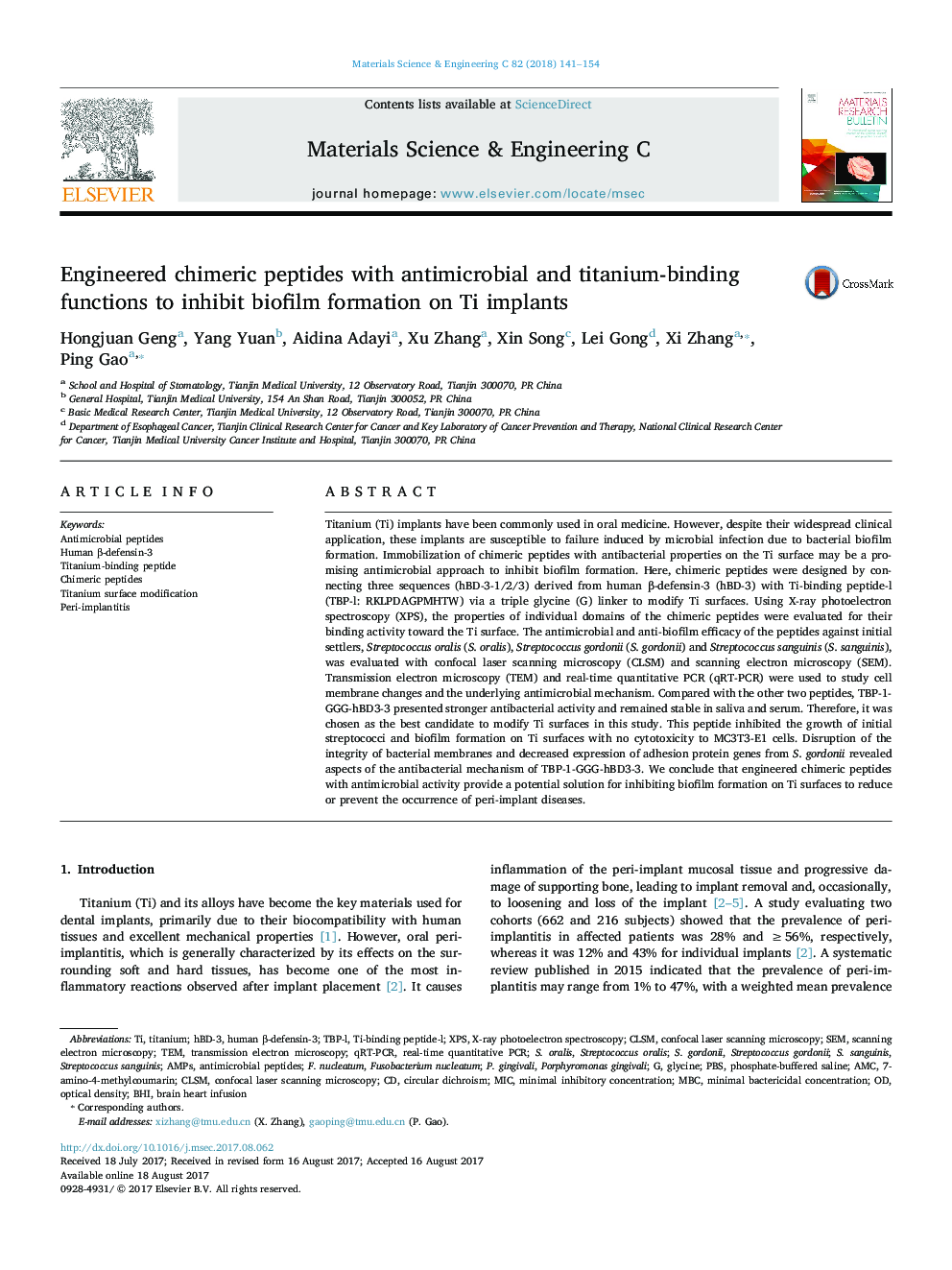| Article ID | Journal | Published Year | Pages | File Type |
|---|---|---|---|---|
| 5434173 | Materials Science and Engineering: C | 2018 | 14 Pages |
â¢Immobilization of chimeric peptides on the Ti surface to inhibit biofilm formation is proposed.â¢Chimeric peptides were designed by connecting one sequence derived from hBD-3 with TBP-l.â¢Chimeric peptides disrupted the integrity of bacterial membranes.â¢Chimeric peptides decreased the expression of adhesion protein genes.â¢Chimeric peptides had no cytotoxicity to MC3T3-E1 cells.
Titanium (Ti) implants have been commonly used in oral medicine. However, despite their widespread clinical application, these implants are susceptible to failure induced by microbial infection due to bacterial biofilm formation. Immobilization of chimeric peptides with antibacterial properties on the Ti surface may be a promising antimicrobial approach to inhibit biofilm formation. Here, chimeric peptides were designed by connecting three sequences (hBD-3-1/2/3) derived from human β-defensin-3 (hBD-3) with Ti-binding peptide-l (TBP-l: RKLPDAGPMHTW) via a triple glycine (G) linker to modify Ti surfaces. Using X-ray photoelectron spectroscopy (XPS), the properties of individual domains of the chimeric peptides were evaluated for their binding activity toward the Ti surface. The antimicrobial and anti-biofilm efficacy of the peptides against initial settlers, Streptococcus oralis (S. oralis), Streptococcus gordonii (S. gordonii) and Streptococcus sanguinis (S. sanguinis), was evaluated with confocal laser scanning microscopy (CLSM) and scanning electron microscopy (SEM). Transmission electron microscopy (TEM) and real-time quantitative PCR (qRT-PCR) were used to study cell membrane changes and the underlying antimicrobial mechanism. Compared with the other two peptides, TBP-1-GGG-hBD3-3 presented stronger antibacterial activity and remained stable in saliva and serum. Therefore, it was chosen as the best candidate to modify Ti surfaces in this study. This peptide inhibited the growth of initial streptococci and biofilm formation on Ti surfaces with no cytotoxicity to MC3T3-E1 cells. Disruption of the integrity of bacterial membranes and decreased expression of adhesion protein genes from S. gordonii revealed aspects of the antibacterial mechanism of TBP-1-GGG-hBD3-3. We conclude that engineered chimeric peptides with antimicrobial activity provide a potential solution for inhibiting biofilm formation on Ti surfaces to reduce or prevent the occurrence of peri-implant diseases.
Graphical abstractDownload high-res image (681KB)Download full-size image
